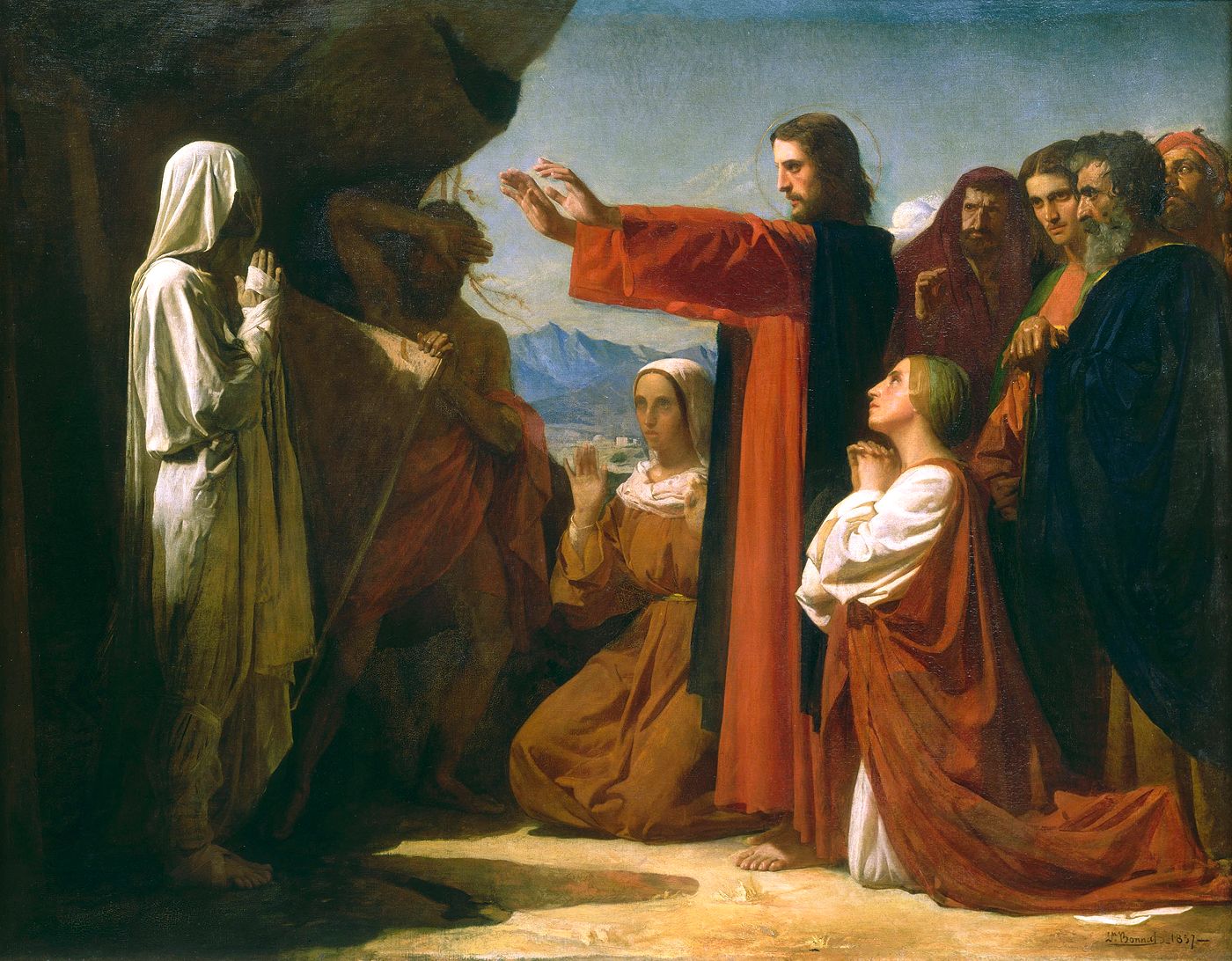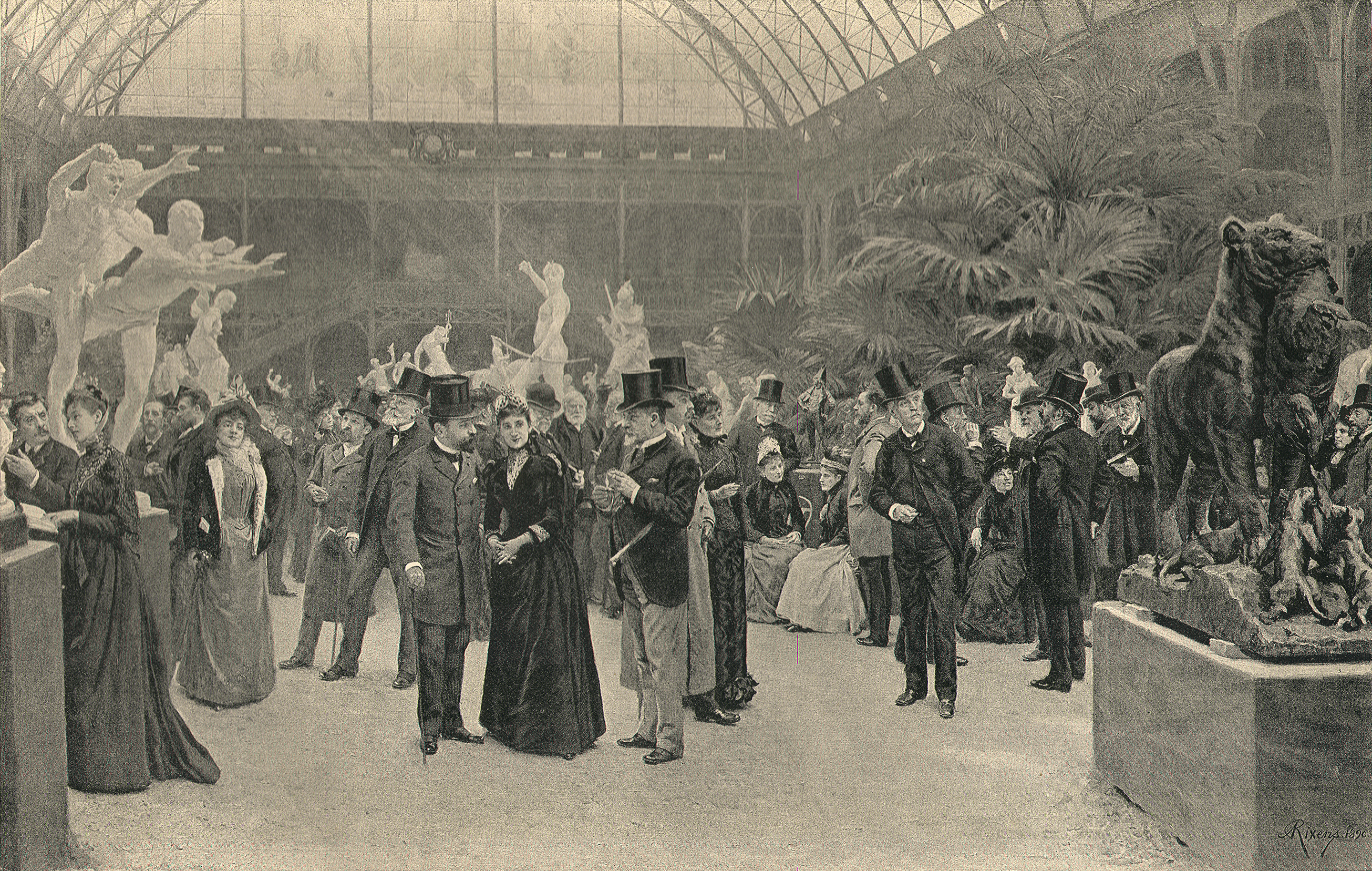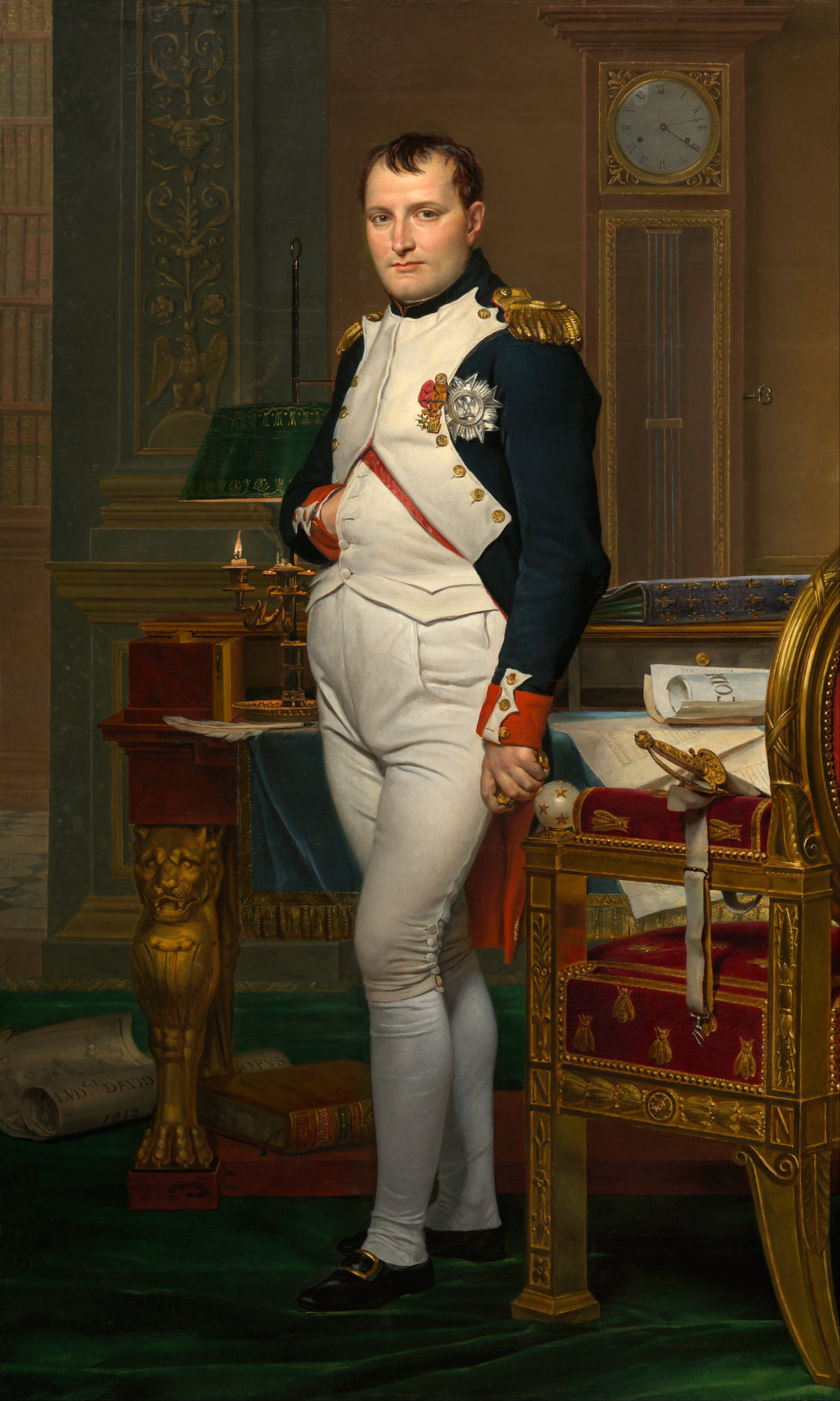|
Narcisse Chaillou
Narcisse Chaillou (12 March 1835 – 1916) was a French painter famous for his genre scenes of Paris and Brittany life. He moved to Paris in 1870 and became the student of Léon Bonnat (1833–1922), Ernest Hébert (1817–1908) et Jean-Baptiste-Camille Corot (1796–1875). He exhibited his works in many French Salons, among them the Salon de Paris and the Salon des artistes français. He moved to Brittany in 1880. The artworks of Narcisse Chaillou belong to the public collections and museums in the cities of Rennes, Nantes Nantes (, , ; Gallo: or ; ) is a city in Loire-Atlantique on the Loire, from the Atlantic coast. The city is the sixth largest in France, with a population of 314,138 in Nantes proper and a metropolitan area of nearly 1 million inhabita ..., Morlaix and Vitré.inventory of France public collections on culture.fr The painter died in Guémémé-sur-Scorff (Brittany) in 1916. Notes External links Artnet Photos of Narcisse Chaillou's artworksO ... [...More Info...] [...Related Items...] OR: [Wikipedia] [Google] [Baidu] |
Léon Bonnat
Léon Joseph Florentin Bonnat (20 June 1833 – 8 September 1922) was a French painter, Grand Officer of the Légion d'honneur and professor at the Ecole des Beaux Arts. Early life Bonnat was born in Bayonne, but from 1846 to 1853 he lived in Madrid, where his father owned a bookshop. While tending his father's shop, he copied engravings of works by the Old Masters, developing a passion for drawing. In Madrid he received his artistic training under Madrazo. He later worked in Paris, where he became known as a leading portraitist, never without a commission. His many portraits show the influence of Velázquez, Jusepe de Ribera and other Spanish masters, as well as Titian and Van Dyke, whose works he studied in the Prado, which placed him at the forefront of painting in France in the 1850s, opposing neoclassicism and academicism. Following the period in Spain, Bonnat worked the studios of the history painters Paul Delaroche and Leon Cogniet (1854) in Paris. Despite repeated attem ... [...More Info...] [...Related Items...] OR: [Wikipedia] [Google] [Baidu] |
Ernest Hébert
Antoine Auguste Ernest Hébert (3 November 1817 – 5 December 1908) was a French academic painter. Biography Hébert was born in Grenoble, son of a notary in Grenoble, and moved in 1835 to Paris to study law. He simultaneously took art lessons in the workshops of the sculptor David d'Angers (1788–1856), and also of the history painter Paul Delaroche (1797–1896), but even though he took art lessons he was mostly a selftaught artist. At the age of 22 years he achieved success with his painting ''Le cup en prison'' in the Paris Salon. The Académie des Beaux-Arts awarded him the Prix de Rome in 1839 for the biblical composition ''Joseph's cup in Benjamin's sack''. The prize was a scholarship and a long study stay in the Villa Medici in Rome. His painting ''Mal'aria'' was exhibited in the Salon of 1850–51, and now hangs in the Musée d'Orsay, Paris. Style Painted in a Romantic style, it depicts a family of Italian peasants escaping an epidemic by ... [...More Info...] [...Related Items...] OR: [Wikipedia] [Google] [Baidu] |
Jean-Baptiste-Camille Corot
Jean-Baptiste-Camille Corot ( , , ; July 16, 1796 – February 22, 1875), or simply Camille Corot, is a French landscape and portrait painter as well as a printmaker in etching. He is a pivotal figure in landscape painting and his vast output simultaneously referenced the Neo-Classical tradition and anticipated the plein-air innovations of Impressionism. Biography Early life and training Jean-Baptiste-Camille Corot was born in Paris on July 16, 1796, in a house at 125 Rue du Bac, now demolished. His family were bourgeois people—his father was a wig maker and his mother, Marie-Françoise Corot, a milliner—and unlike the experience of some of his artistic colleagues, throughout his life he never felt the want of money, as his parents made good investments and ran their businesses well. After his parents married, they bought the millinery shop where his mother had worked and his father gave up his career as a wigmaker to run the business side of the shop. The store ... [...More Info...] [...Related Items...] OR: [Wikipedia] [Google] [Baidu] |
Salon Des Artistes Français
The Salon (french: Salon), or rarely Paris Salon (French: ''Salon de Paris'' ), beginning in 1667 was the official art exhibition of the Académie des Beaux-Arts in Paris. Between 1748 and 1890 it was arguably the greatest annual or biennial art event in the Western world. At the 1761 Salon, thirty-three painters, nine sculptors, and eleven engravers contributed. Levey, Michael. (1993) ''Painting and sculpture in France 1700–1789''. New Haven: Yale University Press, p. 3. From 1881 onward, it has been managed by the Société des Artistes Français. Origins In 1667, the royally sanctioned French institution of art patronage, the Académie royale de peinture et de sculpture (a division of the Académie des beaux-arts), held its first semi-public art exhibit at the Salon Carré. The Salon's original focus was the display of the work of recent graduates of the École des Beaux-Arts, which was created by Cardinal Mazarin, chief minister of France, in 1648. Exhibition at the Salon ... [...More Info...] [...Related Items...] OR: [Wikipedia] [Google] [Baidu] |
Rennes
Rennes (; br, Roazhon ; Gallo: ''Resnn''; ) is a city in the east of Brittany in northwestern France at the confluence of the Ille and the Vilaine. Rennes is the prefecture of the region of Brittany, as well as the Ille-et-Vilaine department. In 2017, the urban area had a population of 357,327 inhabitants, and the larger metropolitan area had 739,974 inhabitants.Comparateur de territoire Unité urbaine 2020 de Rennes (35701), Aire d'attraction des villes 2020 de Rennes (013) INSEE The inhabitants of Rennes are called Rennais/Rennaises in French. Rennes's history goes back more than 2,000 years, at a time when it ... [...More Info...] [...Related Items...] OR: [Wikipedia] [Google] [Baidu] |
Nantes
Nantes (, , ; Gallo: or ; ) is a city in Loire-Atlantique on the Loire, from the Atlantic coast. The city is the sixth largest in France, with a population of 314,138 in Nantes proper and a metropolitan area of nearly 1 million inhabitants (2018). With Saint-Nazaire, a seaport on the Loire estuary, Nantes forms one of the main north-western French metropolitan agglomerations. It is the administrative seat of the Loire-Atlantique department and the Pays de la Loire region, one of 18 regions of France. Nantes belongs historically and culturally to Brittany, a former duchy and province, and its omission from the modern administrative region of Brittany is controversial. Nantes was identified during classical antiquity as a port on the Loire. It was the seat of a bishopric at the end of the Roman era before it was conquered by the Bretons in 851. Although Nantes was the primary residence of the 15th-century dukes of Brittany, Rennes became the provincial capital after th ... [...More Info...] [...Related Items...] OR: [Wikipedia] [Google] [Baidu] |
Morlaix
Morlaix (; br, Montroulez) is a commune in the Finistère department of Brittany in northwestern France. It is a sub-prefecture of the department. Leisure and tourism The old quarter of the town has winding streets of cobbled stones and overhanging houses constructed of stone and timber. Many have religious and secular sculptures on their façades. One of these houses is "la Maison dite de la duchesse Anne", or the "so-called Duchess Anne’s house", which is now a museum, open to the public. This house is said to be one of the oldest in the town. Local legend has it that it derives its name from the fact that the Duchesse Anne of Brittany visited the house during her Tro Breizh pilgrimage. This seems unlikely, though, as construction on the house started in the 1520s and Anne of Brittany died in 1514. ThMuseum of the Jacobinsin Morlaix, housed in a former convent, traces the history of Finistère. Morlaix is a popular location for sea sports enthusiasts with a diverse array ... [...More Info...] [...Related Items...] OR: [Wikipedia] [Google] [Baidu] |
Vitré, Ille-et-Vilaine
Vitré (; br, Gwitreg; gallo ''Vitræ'') is a commune in the Ille-et-Vilaine department in Brittany in northwestern France. Vitré, a sub-prefecture until 1926, is the seat of a canton of 17,798 inhabitants (2015). It lies on the edge of Brittany, near Normandy, Maine, and Anjou. The town has been designated a ''ville d'art et d'histoire'', a town of artistic and historic significance, by the Ministry of Culture in recognition of its rich cultural inheritance. Vitré is the 37th French city with the most historic buildings and has 14% of the historical monuments of the department. "If I was not King of France, I want to be bourgeois from Vitré!" Henry IV, King of France, surprised by the richness of the city in 1598. "The good fortune to see a Gothic city entire, complete, homogeneous, a few of which still remain, Nuremberg in Bavaria and Vittoria in Spain, can readily form an idea; or even smaller specimens, provided that they are well preserved, Vitré in Brittany, Nordha ... [...More Info...] [...Related Items...] OR: [Wikipedia] [Google] [Baidu] |
1835 Births
Events January–March * January 7 – anchors off the Chonos Archipelago on her second voyage, with Charles Darwin on board as naturalist. * January 8 – The United States public debt contracts to zero, for the only time in history. * January 24 – Malê Revolt: African slaves of Yoruba Muslim origin revolt in Salvador, Bahia. * January 26 – Queen Maria II of Portugal marries Auguste de Beauharnais, 2nd Duke of Leuchtenberg, in Lisbon; he dies only two months later. * January 26 – Saint Paul's in Macau largely destroyed by fire after a typhoon hits. * January 30 – An assassination is attempted against United States President Andrew Jackson in the United States Capitol (the first assassination attempt against a President of the United States). * February 1 – Slavery is abolished in Mauritius. * February 20 – 1835 Concepción earthquake: Concepción, Chile, is destroyed by an earthquake; the resulting tsunami destroys the neighboring city of Talcahua ... [...More Info...] [...Related Items...] OR: [Wikipedia] [Google] [Baidu] |
1916 Deaths
Events Below, the events of the First World War have the "WWI" prefix. January * January 1 – The British Royal Army Medical Corps carries out the first successful blood transfusion, using blood that had been stored and cooled. * January 9 – WWI: Gallipoli Campaign: The last British troops are evacuated from Gallipoli, as the Ottoman Empire prevails over a joint British and French operation to capture Constantinople. * January 10 – WWI: Erzurum Offensive: Russia defeats the Ottoman Empire. * January 12 – The Gilbert and Ellice Islands Colony, part of the British Empire, is established in present-day Tuvalu and Kiribati. * January 13 – WWI: Battle of Wadi: Ottoman Empire forces defeat the British, during the Mesopotamian campaign in modern-day Iraq. * January 29 – WWI: Paris is bombed by German zeppelins. * January 31 – WWI: An attack is planned on Verdun, France. February * February 9 – 6.00 p.m. – Tristan Tz ... [...More Info...] [...Related Items...] OR: [Wikipedia] [Google] [Baidu] |
19th-century French Painters
The 19th (nineteenth) century began on 1 January 1801 ( MDCCCI), and ended on 31 December 1900 ( MCM). The 19th century was the ninth century of the 2nd millennium. The 19th century was characterized by vast social upheaval. Slavery was abolished in much of Europe and the Americas. The First Industrial Revolution, though it began in the late 18th century, expanding beyond its British homeland for the first time during this century, particularly remaking the economies and societies of the Low Countries, the Rhineland, Northern Italy, and the Northeastern United States. A few decades later, the Second Industrial Revolution led to ever more massive urbanization and much higher levels of productivity, profit, and prosperity, a pattern that continued into the 20th century. The Islamic gunpowder empires fell into decline and European imperialism brought much of South Asia, Southeast Asia, and almost all of Africa under colonial rule. It was also marked by the collapse of the large S ... [...More Info...] [...Related Items...] OR: [Wikipedia] [Google] [Baidu] |
French Male Painters
French (french: français(e), link=no) may refer to: * Something of, from, or related to France ** French language, which originated in France, and its various dialects and accents ** French people, a nation and ethnic group identified with France ** French cuisine, cooking traditions and practices Fortnite French places Arts and media * The French (band), a British rock band * "French" (episode), a live-action episode of ''The Super Mario Bros. Super Show!'' * ''Française'' (film), 2008 * French Stewart (born 1964), American actor Other uses * French (surname), a surname (including a list of people with the name) * French (tunic), a particular type of military jacket or tunic used in the Russian Empire and Soviet Union * French's, an American brand of mustard condiment * French catheter scale, a unit of measurement of diameter * French Defence, a chess opening * French kiss, a type of kiss involving the tongue See also * France (other) * Franch, a surname * French ... [...More Info...] [...Related Items...] OR: [Wikipedia] [Google] [Baidu] |








